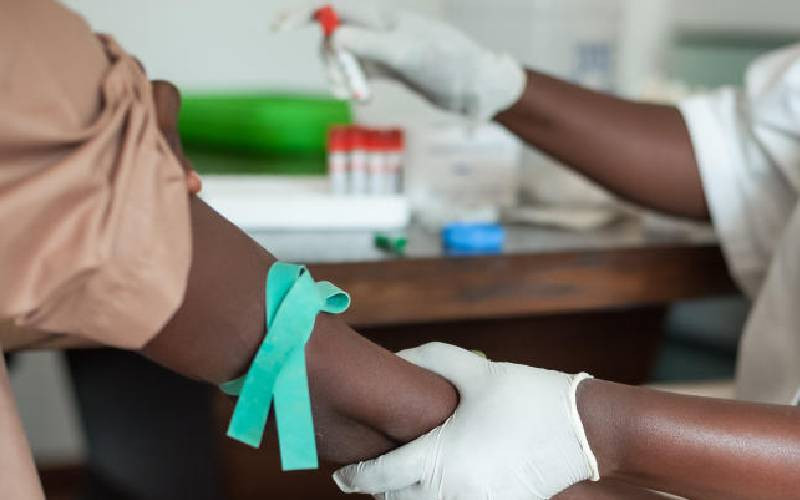
Kenya has little to show for the more than Sh7.25 billion in US funding to improve quality and quantity of donated blood since 2004.
At the end of last month (September 2019), the US President’s Emergency Plan for AIDS Relief, (PEPFAR) brought the 15-year funding to a prior planned end.
Though PEPFAR says it had given Kenyan government year-on-year notices to plan for the transition and avert a crisis, the latter had unsuccessfully requested for a six-month extension.
But Health Cabinet Secretary Sicily Kariuki has assured that blood transfusion services will not be affected by the US funding withdrawal.
“I would like to thank the US government for the support it has been extending to KNBTS over the years… However, as a responsible government, we would like to reassure all Kenyans that we shall strive to ensure the funding gap is addressed appropriately,” she said.
Quantity and safety
The funding had targeted at improving quantity and safety of blood collected in Kenya, and another 13 African countries where similar projects have been going on.
The collaboration was to increase blood collections and voluntary donors while decreasing dependency on Family Replacement Donors (FRDs) and the risk of infectious agents in donated blood.
But recent data from both the government and US agencies suggest most of these targets were never met. Last month, CS Kariuki said Kenya needs about one million units of blood annually but only collected 164,275 units last year.
These units were collected through the Kenya National Blood Transfusion Service (KNBTS) with the gap filled through family replacement donors in hospitals and other unverified sources.
KNBTs estimates private hospitals collect about 20,000 units but are only able to screen about 60 per cent, consequently putting patients at risk of blood acquired infections.
A recent study by the Ministry of Health and the United States Army Medical Research Unit, Nairobi at the Regional Blood Transfusion Centre Nakuru and a key mission hospital in the Rift Valley recorded high rates of infection agents among donors.
“The prevalence of Transfusion Transmissible Infections (TTIs) identified among apparently healthy blood donors is significant and a public health problem,” said the study published last month in the Pan African Medical Journal.
Overall prevalence of TTIs among donors was 14.1 per cent; at 5.6 per cent for hepatitis B, 3.5 per cent for HIV, 3.2 per cent for hepatitis C, 1.2 per cent for syphilis and 0.7 for malaria.
TTIs prevalence was highest among family replacement donors mainly to the private hospital compared to voluntary donors to the Nakuru KNBTS centre.
The World Health Organisation says even in developing counties the prevalence of HIV among blood donors should not be more than one per cent otherwise above this threshold shows poor donor pre-screening practices.
The Ministry of Health in the current Kenya Aids Indicator Survey (KAIS) released in 2014, found HIV prevalence among all blood donors at 3.3 per cent.
However, HIV prevalence among those donating outside KNBTS was 5.7 per cent, suggesting blood from voluntary donors is much safer.
“Although the risk is very small, blood transfusion has the potential of transmitting infections such as HIV, to the recipient,” says the government document.
The KAIS report further indicated people who had been transfused with blood were likely to be HIV positive compared to never recipients.
HIV prevalence
“The overall HIV prevalence among adults and adolescents who reported ever being transfused was 7 per cent; 8.1 per cent in women and 5.1 per cent in males.”
The study recorded HIV prevalence among the general public at 5.6 per cent, with women at 6.9 per cent and men at 4.4 per cent.
But while the blood project in Kenya seems to have achieved little, it has been a success in 13 African participating countries.
A report in the Morbidity and Mortality Weekly Report of the US - Centres for Disease Control and Prevention (CDC) in December (2018) placed Kenya among five countries where blood collection had declined.
The report showed 3.2 per cent of blood collected by KNBTS in 2016 was positive for HIV, hepatitis and syphilis.
Significant also, the benefiting countries were supposed to incrementally replace the US funding with own resources becoming fully independent by 2014.
Four countries including neighbouring Tanzania were able to wean themselves from donor funds, with five others headed there.
Only Lesotho and Kenya recorded a major drop in government funding to their blood management services.
For example, while in 2014-2016 government funding of blood services rose by about 800 per cent in Rwanda it fell by 63 per cent in Kenya.
 The Standard Group Plc is a multi-media organization with investments in media platforms spanning newspaper print
operations, television, radio broadcasting, digital and online services. The Standard Group is recognized as a
leading multi-media house in Kenya with a key influence in matters of national and international interest.
The Standard Group Plc is a multi-media organization with investments in media platforms spanning newspaper print
operations, television, radio broadcasting, digital and online services. The Standard Group is recognized as a
leading multi-media house in Kenya with a key influence in matters of national and international interest.











